Symptoms of High Blood Pressure – What You Need to Look Out For
High blood pressure is often called a “silent disease” since it rarely causes clear symptoms at first. When signs do appear, they may include headaches, dizziness or fatigue. Long-term elevated pressure increases the risk of stroke, heart attack and dementia. The most common risk factors are age, obesity, heredity, smoking, stress and high salt intake. Both the condition itself and treatment with blood pressure medication can also raise the risk of falls, especially among older adults.
Why High Blood Pressure Is Dangerous
High blood pressure, or hypertension, is one of the leading risk factors for cardiovascular disease worldwide. In Sweden, about 25% of the adult population is affected [1]. The problem is that many people are unaware of it, since the condition often develops slowly and can remain symptom-free for years.
This makes hypertension a “silent” but dangerous disease that, over time, can cause serious damage to the heart, brain, kidneys and blood vessels.
The Silent Disease
Blood pressure is the force created when blood is pumped through the arteries. When pressure remains too high for a long time, the artery walls are damaged and the heart has to work harder. Despite this, most people feel completely healthy.
Many are diagnosed only during a routine check-up, sometimes before surgery or as part of another investigation. This is why regular blood pressure checks are so important – especially after the age of 40.
Possible Symptoms of High Blood Pressure
Even though hypertension is often symptom-free, some people may experience:
-
Frequent headaches, especially in the morning
-
Dizziness or balance problems, sometimes when changing position suddenly
-
Fatigue and difficulty concentrating, due to impaired blood flow to the brain
-
Vision disturbances, such as blurred vision or flickering
-
Heart palpitations, feeling like the heart is beating hard or irregularly
These symptoms are nonspecific and may also be caused by other conditions, which makes hypertension difficult to detect without measuring blood pressure [2].
How High Blood Pressure Damages the Body
Long-term elevated blood pressure gradually causes damage in the body. Common consequences include:
-
Atherosclerosis – stiffened arteries that increase the risk of blood clots
-
Stroke – the single most serious complication; high blood pressure is the top risk factor
-
Heart attack and heart failure, since the heart is overworked and blood vessels are damaged
-
Kidney disease, as the sensitive kidney vessels are harmed by high pressure
-
Dementia, because small blood vessels in the brain may be damaged, causing chronic oxygen deficiency [3]
Risk Factors for High Blood Pressure
Several factors increase the risk of developing hypertension:
-
Age – blood pressure often rises naturally as we get older
-
Heredity – family history of hypertension raises the risk
-
Overweight – especially abdominal obesity
-
Smoking and heavy alcohol use – both harm blood vessels
-
Stress – long-term stress can elevate blood pressure
-
Physical inactivity – lack of exercise weakens both blood pressure and heart health
-
High salt intake – salt binds fluid in the body, raising vessel pressure [4]
Lifestyle changes such as more exercise, improved diet, reduced alcohol intake and quitting smoking can significantly lower blood pressure.
When Should You Seek Medical Care?
-
If you experience symptoms such as recurring headaches, dizziness or palpitations
-
If you belong to a risk group, e.g. over 40, overweight or with family history
-
At very high blood pressure levels (above 180/110 mmHg), you should seek medical care immediately
A simple blood pressure measurement can provide an instant answer and allow treatment to begin.
High Blood Pressure and the Risk of Falling
Beyond the risk of cardiovascular disease, there is another lesser-known link – high blood pressure and fall accidents.
-
Dizziness and balance problems may cause people with hypertension to lose stability more easily
-
Blood pressure medication can sometimes cause drops in pressure when standing up quickly, known as orthostatic hypotension, which may trigger dizziness or even a fall [5]
-
Among older adults, where falls are already one of the most common causes of hospital admissions, this makes correct blood pressure treatment even more important
Regular blood pressure monitoring and proper medication dosing can therefore reduce not only the risk of stroke and heart attack, but also the risk of falls – preventing fractures and long-term health complications.
Safety alarm with automatic fall alarm can increase safety for people with an increased risk of falling
Sensorem’s personal alarm is an example of a technical aid specially developed for people who have an increased risk of falling. The personal alarm can automatically trigger the alarm in the event of a fall and then call relatives using the watch’s built-in speakerphone with two-way communication. The personal alarm works outdoors and has built-in GPS positioning so that relatives can see the user’s position on a map in the Sensorem app.
READ ABOUT HOW SENSOREM’S PERSONAL ALARM AUTOMATICALLY CAN DETECT A FALL
Sources:
- 1177 Vårdguiden – High Blood Pressure
- Swedish Heart-Lung Foundation – Symptoms of Hypertension
- National Board of Health and Welfare – National Guidelines for Cardiac Care
- Swedish Heart Association – Risk Factors for High Blood Pressure
- Swedish Medical Products Agency – Blood Pressure Medication and Risk of Falls

